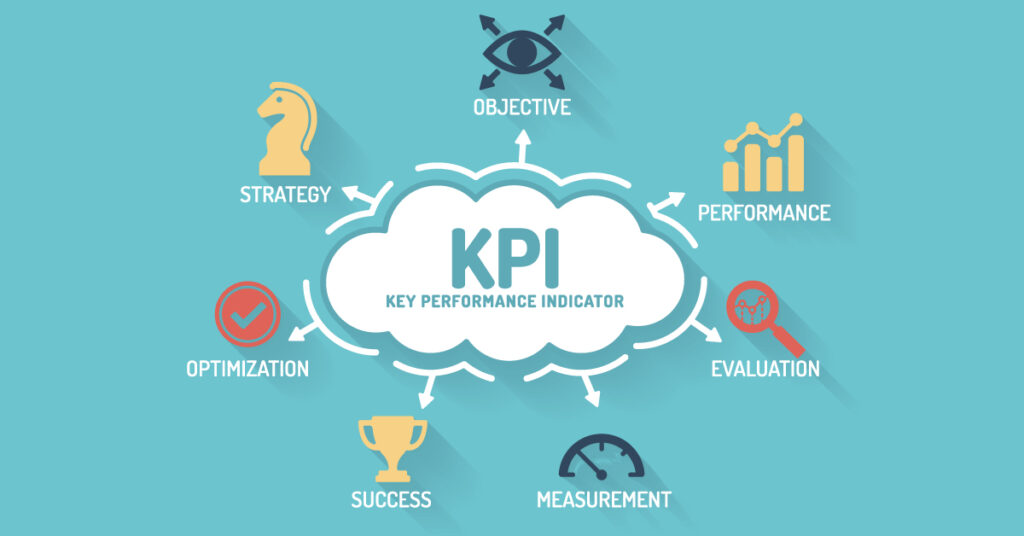5 Optometry Key Performance Indicators You Want To Track
Every day we have daily tasks at work or a checklist of errands. We often encounter some common questions to help us organize our day. For example, what did you complete today? In a way, key performance indicators, or KPI’s for short, are all around us in our daily lives.
Today, if you want to grow your optometry practice in your local area you need to have a strong online presence. And the best ways to review your online performance can be a little murky without some assistance. Here we want to dive into key performance indicators (KPI’s) you want to know to ensure your optometry practice reaches its objectives.

First, KPI’s refer to targets or goals that you can use to measure your progress. These help us regroup and organize when we fail to reach them, and also allow us to reflect on the best practices when we do meet them.
The main goal of your digital marketing efforts is to create online avenues for lead generation. Optometry KPIs centered on digital marketing can evaluate your practice’s online performance and show if they are working to bring in new leads.
What should your digital marketing goals look like? Define success as being the number #1 optometry practice in your area or getting lots of 5-star reviews from your patients. However your practice may define its goals, we broke down key performance indicators (KPI) that are most relevant and valuable.
Marketing KPI’s To Track
KPI’s definitely vary from industry and business, whether it’s an operational goal or sales goal. When it comes to digital marketing, the KPIs are a bit different from your day-to-day KPIs as an optometrist.
The focus is not on the number of refractions in a day, but instead, you’ll be looking at things like website page visits, social media, and even email rates.
Here are five aspects of the digital marketing strategies you want to review and dive further in-depth in:
- SEO Optimized Content
- Website Traffic
- Paid Advertising
- Social Media
- Email Marketing
All of these digital marketing strategies have metrics and indicators that can show whether your efforts are generating leads and optimizing your online presence.
1. What to Look For In Seach Engine Optimization
With an effective search engine optimization (SEO) strategy you can optimize local searches to ensure potential patients get pointed in your direction.
You definitely want to have a search engine optimization (SEO) KPI to ensure your practice is seen online and generates organic traffic to your website. Unlike some digital marketing strategies, you don’t have to pay to do SEO.

Keyword Research
If you’re seeing that your optometry practice is not appearing on the first page of a Google search for optometrists nearby that is a strong indicator you need to optimize your SEO efforts.
Another indicator could be low traffic to your website pages, content pages, etc. One of the main aspects contributing to SEO is by doing keyword research. You can add keywords to your practice’s website pages within the meta descriptions and content.
Some of the most popular keywords patients search include, but are not limited to:
- What is an optometrist?
- eye doctor near me
- Optometrist vs ophthalmologist
- where to buy a contact lens near me
- Vision center
- eye health
- best rated optometrist near me
A quick tip would be to focus on adding valuable content by having a blog section that features relevant keywords and subjects your patients would be most interested in. When you start using targeted keywords, your audience has more chances to see you in the top results. There are tons of online tools like AHREFS you can use to do keyword research to assist you with this.
You will see great results as you continue to practice using keywords, be this in your body of text, graphic images, or the videos you put up on your website.
Read More:7 Optometry Marketing Ideas to Attract New Patients
2. How To Check Your Website Traffic
If you’re putting in the time, effort, and even money into a good quality website, you’ll want to ensure that it is well received and attracts patients.
Your optometry practices website traffic is a great key performance indicator to evaluate. To start, ask the right questions: How long are visitors spending on your website? What channel is your traffic for your website coming from?
Figuring out the answers to these questions can be used as valuable data points to help guide or outline your next steps. This will give you some insight into what you can continue doing in the future to attract new patients. As well as what you can tweak and optimize for improvement.
Remember your goal is to make sure when potential patients search optometrists near me they click your website and then take action like booking an appointment. These efforts work towards converting a page visit to your website into a patient that will walk through your office doors.
Take a look at your website visits and find out what your leading channels are that are bringing traffic to your website. Is it email campaigns? Social media posts? Or paid media? Get an excel sheet and start tracking these numbers so you know what area of your online presence is performing great and what is not.
Bounce Rate
Your bounce rate is the number of users visiting your website that then exit before making another action to your site. When checking your bounce rate, you want to see a low one. If you evaluate your website analytics and see a high bounce rate, this is a pretty big indicator that there may be major issues with your site. First, the thing you want to do is check your homepage for any obvious issues such as misspellings or inaccuracies about your business information.
It’s possible your website is in need of an upgrade, both in its visual aesthetics and being more user-friendly. Whatever the case may be a low bounce rate is a goal you want to work towards.
Conversion Rate
Your conversion rate is the number of users who go to your website and complete an action objective. If you have an online store with a selection of eyewear with a variety of frames, designs, and colors. Then you want to see sales conversions of potential patients successfully purchasing from your optical store.
There are other ways you can look at conversions including seeing unique visits to your website convert to booked appointments online. Having high conversions for whatever action you want out of your site KPIs are being reached.
3. Improving Your Paid Advertising

Learn more about pay-per-click advertising, a great option to give your online presence a boost with faster results. If you have paid ad KPI’s for your eye care practice, the goal is that they are working and getting clicks. The ads can appear on the first page results of the most significant search engines such as Google or Yahoo.
Suppose you are willing to finance your online presence by paying more. If it’s within your budget, you can take advantage of pay-per-click ads (PPC ads). By participating in keyword bidding, you can find your website at the top of the search results page of targeted keywords.
Click-To-Open-Rate (CTR)
Another thing you will see rise will be your click-through rate. Abbreviated at CTR, this is a ratio that shows how often people exposed to your ads or products actually click these.
Google AdWords is a digital marketing tool that is used to evaluate click-through rates (CTR), and cost-per-click rates. This is the tool that PPC campaigns recognize and best work with, although you can also try other campaigns that Microsoft and other search engines offer.
An example of a CTR is if you know how many visitors view your ads or impressions, divide it by the actual clicks. Your productivity can mean more as you will be aware of what factors and topics are more people inclined to read and need.
By allowing PPC and GoogleAds to work together, you can filter your audience until you have the relevant and targeted patients in your local community.
Also, a bonus tip, if you have not yet listed your business, take advantage of the Google My Business account and get more exposure as your practice sees more opportunities to meet potential patients through the geographic marketing setting.
Learn More: 9 Optometrist Ads Strategies to Generate More Patients
4. Tracking Your Social Media KPI
Social media platforms are the easiest way to connect with your patients. They offer a variety of opportunities to reach a wider audience in your city and strengthen your online presence.
You must know what you are trying to accomplish when setting your social media KPI’s. Are you trying to assess your online growth? Are you looking to get more 5 star reviews online?
Knowing what your KPI’s are from the start will assist you in your decisions on your social media content and planning. Having many followers may look impressive, but more importantly, you want to affirm they are valuable followers. In other words real people, not bots, and real potential patients.
To start evaluating your social media performance, definitely follow is their growth rate. New followers are like new leads. Give your audience many ways to engage, lots of ways to create solution-generated content. As well as ways to share and engage with your practice.
Optometrists want to see a steady increase in engagement such as likes, comments, shares from their social media posts over time. This would be a clear indication that your social media posts are successfully generating a buzz and educating patients about eye care.
Your goal is to also have an understanding of what your patients need, lead them to visit your clinic, discuss eye care symptoms and solutions.
Overall, some great KPI’s to have with your social media is to have a solid following across social media platforms. Check your engagement on a weekly or monthly basis. Check your reach and impressions to see how often your content is being displayed to your targeted audience.
5. Email Marketing Performance Metrics To Know

Let’s dive into key metrics for you to take note of for your email campaign KPI’s performance. For example, are a large portion of your delivered emails being marked as spam? There may be glaring issues that need to be resolved.
What sub-metrics matter in email marketing, and how vital are they in your campaign performances?
Delivery Rate
The delivery rate is a report of how many of your emails successfully reached your subscribers’ email servers. To get the total delivery of emails, subtract the number of failed email deliveries from the number of your recipients. However, you need to understand that the delivery rate is different from deliverability. The latter would let you know how many of your emails reached your recipients’ inboxes and not to their spam folders.
The delivery rate is equally important because it tells you how clean your email list is. Your practice does not want bounced emails and unsubscriptions.
Open Rate
This rate shows you how many recipients actually opened what you sent. Total opens mean how many times the recipient opened your email. You need to have a benchmark. Which email got the higher percentage of open or total opens? What sets this email apart? Open rate matters because it tells you how interested recipients are in your email communication.
Click Rate
Click rate tells you how many recipients clicked something in the email you sent. If you want to know how engaging your emails are, you need to know your click rate.
This shows you more about the performance of your actual campaign. It tells you if you created email content engaging enough that recipients spent time clicking on the something in the email.
Unsubscribes would also be another metric to note. Ideally, this number would be low.
iMatrix Can Help You With KPI’s And More
Now that you know what makes the top KPIs in optometry digital marketing, you can decide which can help you generate the most leads. If you are a practicing optometrist or a provider who would like to learn more about the most efficient online tools, check out our marketing packages. Outsource the best digital marketing professionals that could help you navigate the best tools that can help you, call iMatrix today at 888.792.8384!



